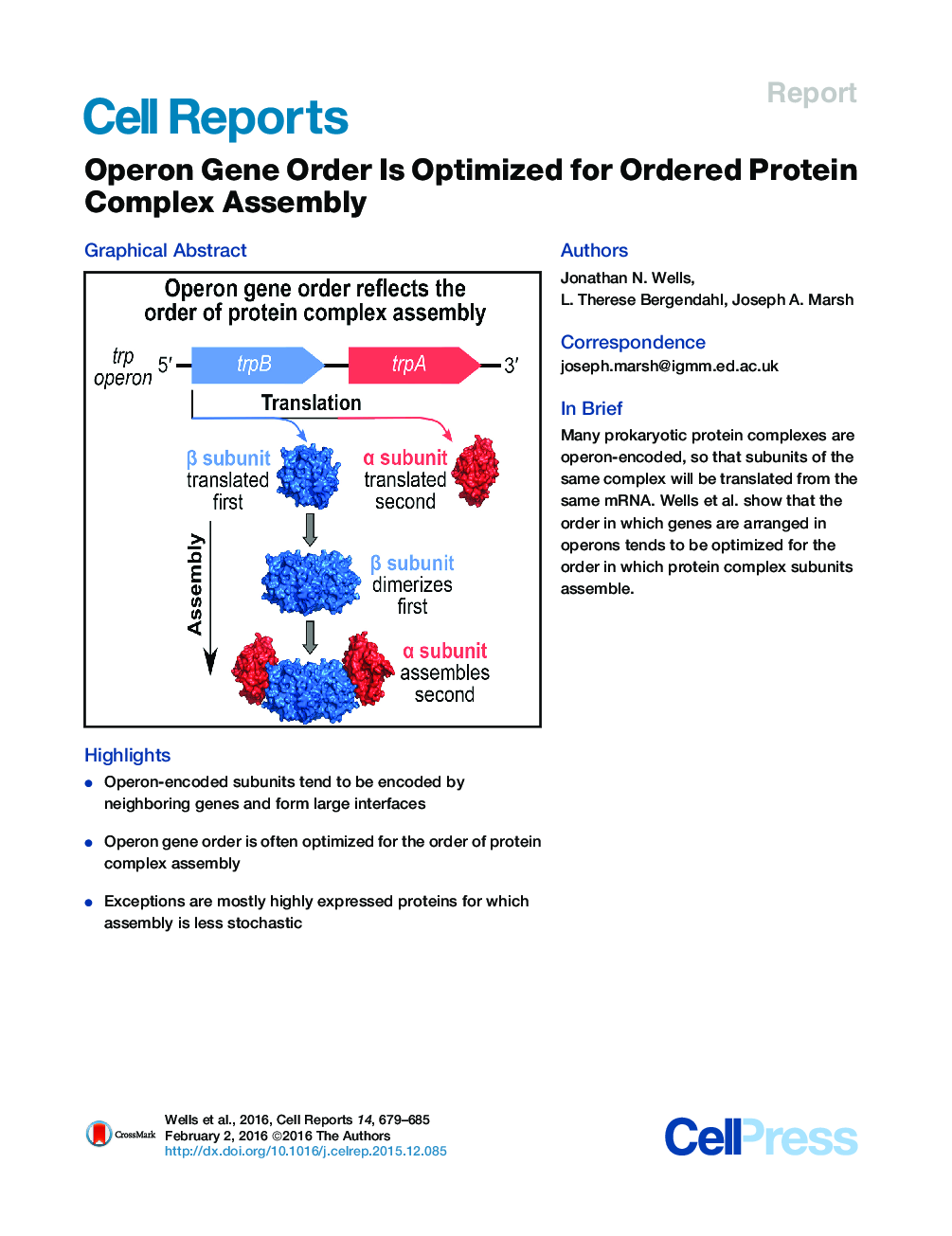| Article ID | Journal | Published Year | Pages | File Type |
|---|---|---|---|---|
| 2041715 | Cell Reports | 2016 | 7 Pages |
•Operon-encoded subunits tend to be encoded by neighboring genes and form large interfaces•Operon gene order is often optimized for the order of protein complex assembly•Exceptions are mostly highly expressed proteins for which assembly is less stochastic
SummaryThe assembly of heteromeric protein complexes is an inherently stochastic process in which multiple genes are expressed separately into proteins, which must then somehow find each other within the cell. Here, we considered one of the ways by which prokaryotic organisms have attempted to maximize the efficiency of protein complex assembly: the organization of subunit-encoding genes into operons. Using structure-based assembly predictions, we show that operon gene order has been optimized to match the order in which protein subunits assemble. Exceptions to this are almost entirely highly expressed proteins for which assembly is less stochastic and for which precisely ordered translation offers less benefit. Overall, these results show that ordered protein complex assembly pathways are of significant biological importance and represent a major evolutionary constraint on operon gene organization.
Graphical AbstractFigure optionsDownload full-size imageDownload as PowerPoint slide
